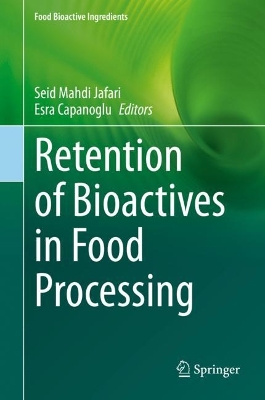Food Bioactive Ingredients
1 total work
Retention of Bioactives in Food Processing
Bioactive compounds in food, known for their positive health effects, can be lost during handling after harvest, processing and storage. While most foods are exposed to processing to increase shelf life and edibility and to ensure microbial safety, conventional processing methods may have disadvantages, such as decreasing the nutritional quality of foods, long processing times, high temperature and high energy uses. For these reasons, novel non-thermal food processing technologies (including HPP, ultrasound) and novel thermal food processing technologies (including microwave/Ohmic heating) have become widespread.
This book provides a critical evaluation of the effects of conventional, novel non-thermal, and thermal food processing techniques on the retention and bioaccessibility of bioactive compounds in food materials. Within these three categories, many different processing methods are included: fermentation/germination, drying, extrusion, and modified atmosphere packaging, as well as novel technologies, such as microwave heating, ultrasound, high pressure processing, ozonation, and membrane separation processes.
